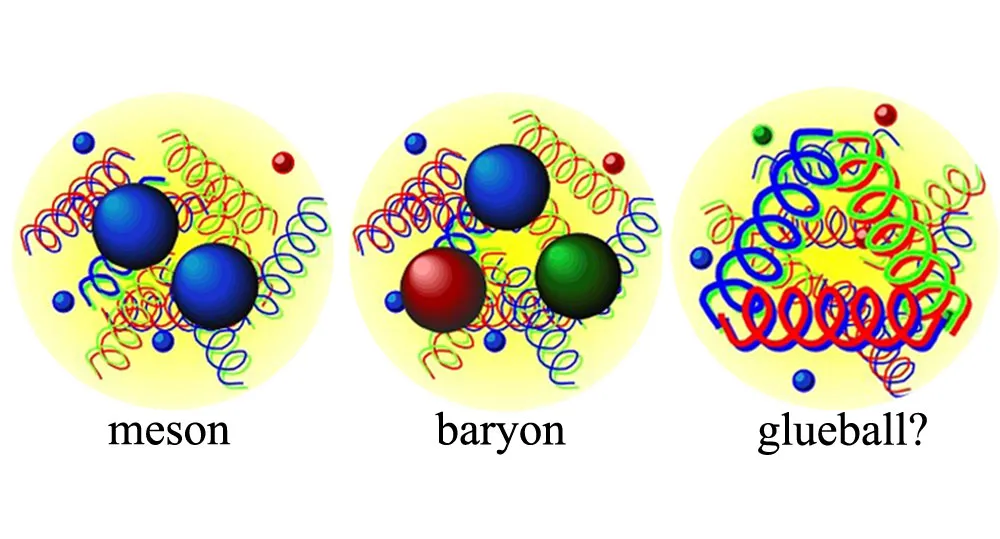"Argonne National Laboratory scientists have used anomaly detection in the ATLAS collaboration to search for new particles, identifying a promising anomaly that could indicate new physics beyond the Standard Model. Credit: SciTechDaily.com" (ScitechDaily, New Particle? AI Detected Anomaly May Uncover Novel Physics Beyond the Standard Model)
The AI detected some kind of anomaly in the CERN ATLAS system. That anomaly can mean that there is some new particle. The new particle can be something that takes us beyond the standard model. The new particle is easy to connect to the standard model. The model itself is open. But the new particle can mean that the missing particle between the Higgs Boson and the photon is found.
If we think that all bosons are like W and Z bosons. Maybe, the Higgs boson is another part of some other boson pair. The W and Z bosons transmit the weak nuclear force. Another boson pushes. And another pull. So maybe the Higgs Boson's pair is missing. That particle pair can explain some mysteries in the universe. Or maybe that new particle is a so-called graviton. The glueballs, gluon balls, or gluonium are the things that can explain why black holes are so special.
The black holes are the pure graviton balls. The idea is that if the atom gets a high enough energy load, that energy impulse pushes guns, quarks, and electrons into one entirety. In the next text is the hypothetical material called "Higgs Bosonium" the Higgs boson balls.
Maybe that hypothetical Higgs Bosonium is not needed between glueballs or gluonium and singularity. In singularity, all quantum fields and particles are slammed in one entirety. That material forms the black hole. And singularity (material) may be the mysterious graviton. Maybe researchers could form singularity by pressing gluons in gluon balls together.
"Gluons aren’t simply the particles that bind quarks together; they may also be particles that bind themselves together into a quarkless glob known as a glueball. The lightest glueball state may be able to be revealed from the decays of particles created in electron-positron colliders." (BigThink, New particle at last! Physicists detect the first “glueball”)Researchers detected glueballs or gluon balls.
The glueballs or gluonium are not elementary particles. They are groups of gluons, that act like some kind of hadrons. Today we know that atoms consist of gluons, quarks, and electrons. Quarks form structures called Hadrons or in the case of atoms: Baryonic Hadrons called protons and neutrons.
Those particle groups are the non-elementary parts of the atoms. The new particle group is called glueballs. In 2021, researchers discovered the triple glueball. The "Hadron" is made of gluons.
The glueballs are groups of the gluons. The other name for that thing is gluonium. And it's the highest energy thing that material research can prove. There is another more energy particle group that is even harder to create than gluonium.
And it's the theoretical "Higgs Bosonium". That hypothetical thing is a group of Higgs Bosons. The Higgs Boson has existed for a very short time. And the Higgs Boson combinations are purely hypothetical.
And that observation formed a new model of stars. That new theoretical star type is between, a still theoretical quark star and a black hole. That new theoretical star model is the gluon star. And it's possible. The Higgs Bosons can create a similar structure as glueballs. If that "Higgs Bosonium" exists. It can be even more energetic than gluonium.
So the five densest stars could be...
Neutron star
Quark star (Theoretical)
Gluon star (Theoretical)
Higgs boson star (Hypothetical)
Black hole
Glueballs or gluonic balls are not new ideas. The first observations. That predicts this kind of material made in 2015. The glueballs or gluon balls are extremely high-energy particles. Some sources describe them as particles made of pure energy. Or pure, strong nuclear force. The model of this extremely high-energy particle group causes visions that the gluon balls can be the thing. That can used to form artificial black holes.
The idea is that the energy impulse that comes out from the glueball forms an electromagnetic vacuum that collapses immediately. That thing causes a situation in the material and energy around that gluon ball fall back into the bubble. That causes the form of the black hole.
"Nucleons consist (left) of quarks (matter particles) and gluons (force particles). A glueball (right) is made up purely of gluons." (ScitechDaily, Glueball – A Particle Purely Made of Nuclear Force)
By the way
The gluonium or "Higgs Bosonium" can used to create the WARP bubbles. When Higgs boson decays. It sends energy impulses around it. That energy impulse pulls particles' shells out. The electromagnetic vacuum around that particle rips it in pieces. But if a particle gets energy from inside it, that thing can keep it in its form.
The hypothetical "Higgs Bosonium" is like gluonium or glueballs. But it's even more high-energy particles. If those particles can stabilized, they can form a new and powerful energy source. But as you know. That kind of particle exists in a very short time. And the energy level that the system needs is very high.
https://bigthink.com/starts-with-a-bang/new-particle-first-glueball/
https://www.livescience.com/ultra-rare-odderon-particle-detected.html
https://www.livescience.com/what-is-singularity
https://phys.org/news/2024-05-evidence-glueballs-beijing-spectrometer-iii.html
https://scitechdaily.com/glueball-a-particle-purely-made-of-nuclear-force/
https://scitechdaily.com/new-particle-ai-detected-anomaly-may-uncover-novel-physics-beyond-the-standard-model/
https://en.wikipedia.org/wiki/Glueball
https://en.wikipedia.org/wiki/Higgs_boson
https://en.wikipedia.org/wiki/Standard_Model
https://en.wikipedia.org/wiki/W_and_Z_bosons







No comments:
Post a Comment
Note: Only a member of this blog may post a comment.